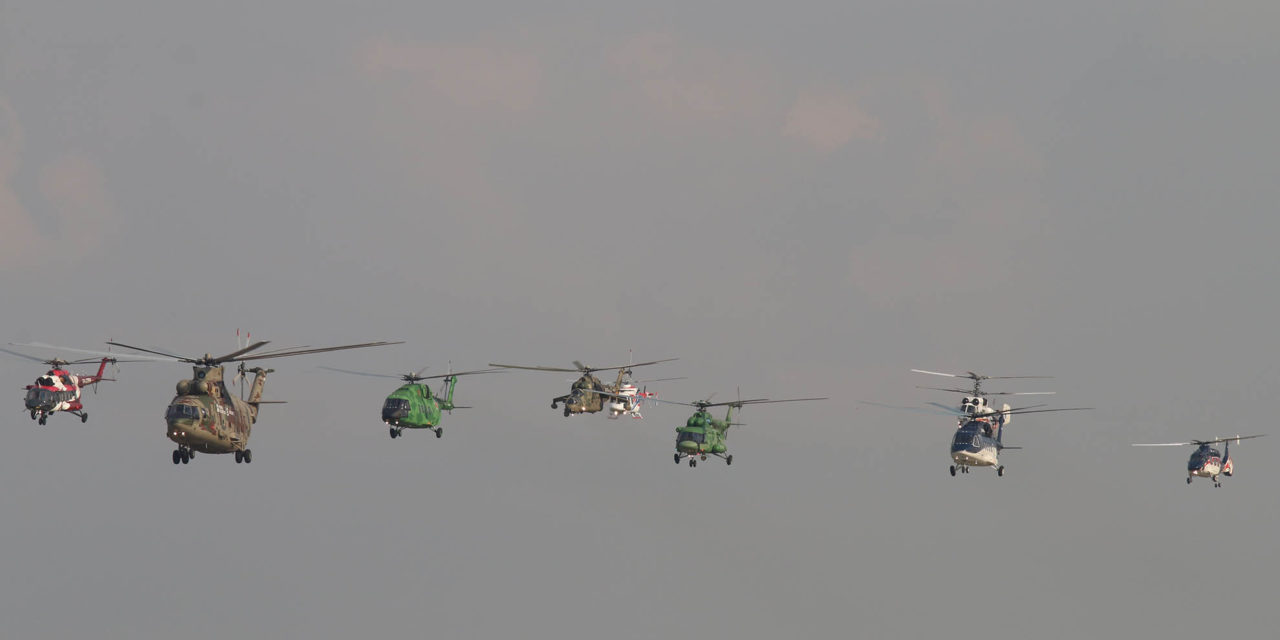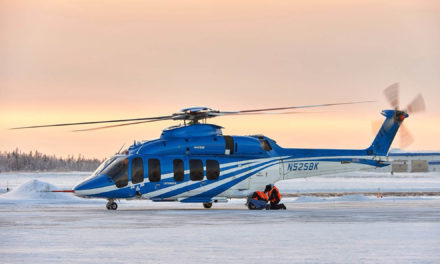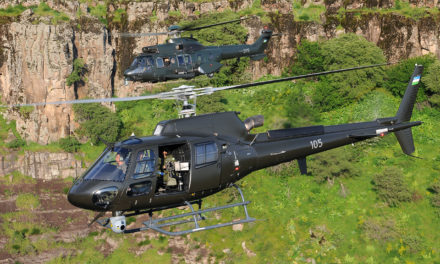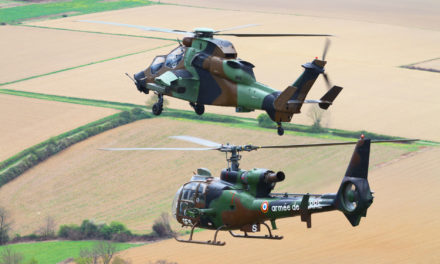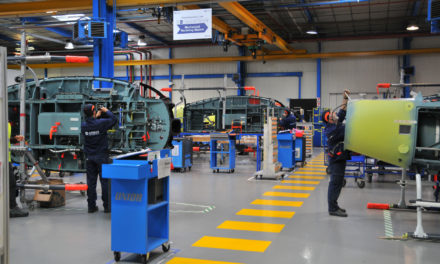The Moscow Air Show (MAKS), the latest edition of which was held from August 27 to September 1, 2019 at Zhukovsky Airport, is of course an ideal showcase for Russian production. On the helicopter side, Russian Helicopters displayed its entire range and provided details of the many developments underway.
Caption for the opening image: The Russian Helicopters family opened the daily in-flight demonstrations. From the huge Mi-26 (second from the left) to the new Ka-62 (last right), a dozen aircraft represented the astonishing range of Russian rotary wings.
Kamov Ka-62 comes out of purgatory
The Kamov 62 fills a gap in the range of Russian Helicopters, between the light twin Ansat and the Mi-8 / Mi-17 family. The objective, when it was launched in 2012, was to develop and certify it before 2016. This rather optimistic schedule could not be held: the 6.5-tonne machine made a brief hovering flight in 2016, and its first official flight the following year.
Since then, major works were undergone to modify the empennage as well as the transmission chain designed in partnership with the Austrian company Zoerkler. During the show, the Kamov 62 was presented to Turkish President Recip Erdogan and participated for the first time in the public flying demonstrations.
On the Safran’s booth, this new dynamics of the program was noticed with satisfaction.
For the Kamov 62, Safran Helicopter Engines has developed the Ardiden 3G, a new engine family from 1700 to 2000 hp derived from the general architecture of the existing Ardiden 1. The Ardiden 3G has been certified by EASA in June 2017. The European and Russian Kamov 62 certifications are expected in November 2020.
At the Arsenyev site in the Vladivostok region, production of the first 24 production units has been launched, representing around a year of production.
At Bordes, in France, where the Ardiden 3 will be manufactured, Safran Helicopter Engines is preparing to deliver the first turbines next year.
Indian time for the Kamov Ka-226T
The Kamov Ka-226T was displayed in a configuration adapted to the on-board operations, with the folding blades of the two counter-rotating rotors. Fewer than twenty aircraft would be in service today, which would explain why Safran Helicopter Engines has delivered today only about forty Arrius 2G1 engines. The future of the Ka-226T is mainly related to cooperation with India. A framework agreement was signed in December 2015, but Moscow is still waiting for the signing of a first co-production contract for 197 aircraft. Safran Helicopter Engines is ready to deliver 40 engines per year as soon as this contract comes into effect.
The Kazan Ansat: from Moscow to the Siberian Great North
The light twin Ansat flew for the first time in 1999. For the moment, the Russian air force which uses about fifty copies for pilots training purposes, is the main operator of this helicopter. Some150 Ansat are currently in the order book, and Russian Helicopters plans to deliver forty in 2019. The manufacturer presented the Aurus model equipped with a VVIP interior designed in partnership with a famous equipment supplier in Russia known for its luxury cars outfittings.
During the show, Russian Helicopters completed the supply of seven aircraft to Polar Airlines in a specific version adapted to the Siberian Great North extreme conditions, (ability to park outside under severe negative temperatures, IFR certification, increased range, etc. .). Three of these helicopters will be equipped for medical evacuations.
Russian Helicopter Systems, the Ansat’s launch customer, organized around 40 scheduled flights between its Moscow suburban heliport and the Zhukovsky airport. The purpose of this operation was mainly to convince the Russian authorities to cancel restrictions on commercial flights over the capital.
The VRT500 development continues
The VRT 500 five-seat light monoturbine helicopter project was first introduced in 2018 at HeliRussia.
During MAKS 2019, a first distribution contract, with the Malaysian company Ludev Aviation, was signed. VR Technologies, the Russian Helicopters innovation design office, is waiting for the EASA certification of its helicopter in 2022. Marketing will start the following year.
The VRT 500, with a take-off weight of 1600 kg, will initially be equipped with a western turbine. Safran Helicopter Engines proposes the Arrius 2G which already equips the Bell 505. Subsequently, a Russian engine is not excluded. Russian Helicopters is considering a sale price equivalent to that of the Bell 505.
The Mi-38 new configurations
The Mi-38 prototypes have already been displayed at previous Moscow air shows. This year, the helicopter displayed in flight was featuring a recently russian certified VIP cabin. The Mi-38 can accommodate up to 30 passengers in high density version or 8 with a VIP layout.
A Mi-38 with a camouflage paint illustrated the military applications of the helicopter.
Russian Helicopters announced that the first two aircraft will be delivered this year to the Russian Ministry of Defense and that the following two aircraft, in a civilian configuration, will be handed over to a Russian government agency in the first half of 2020.
The Mi-38 has a range of 1300 kilometers with additional tanks. With a maximum take-off weight of 15.6 tonnes, it extends the Mi-8 / Mi-171 range, which is limited to 11 tonnes.

